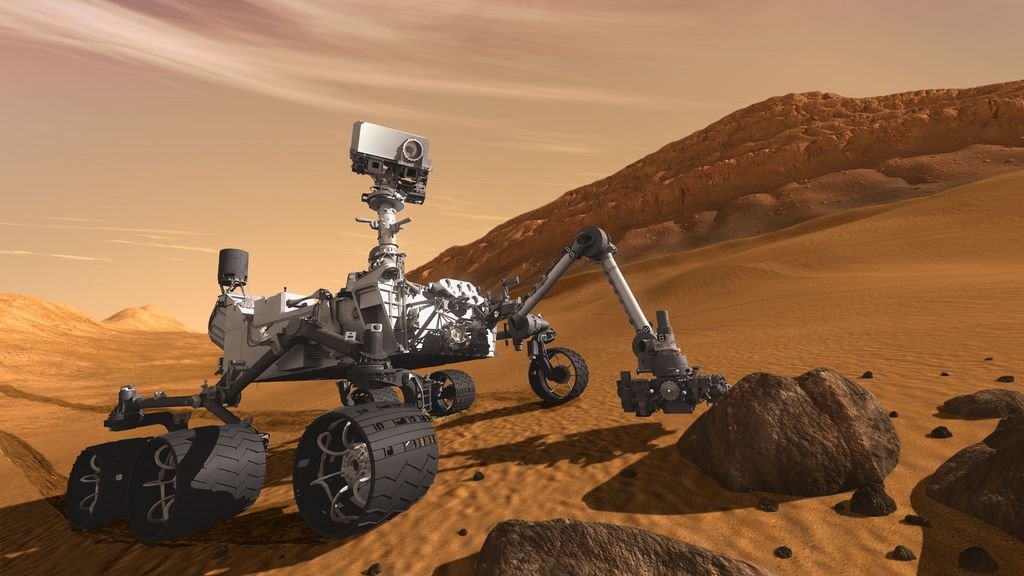NASA’s Curiosity Mars rover has been exploring Mars for the past 11 years. It has driven over 20 miles (32 kilometers) and it has just passed its 4,000th day on Mars.
4,000 Days Of Success
Curiosity landed on Mars in August 2012, for many years it was the most advanced device on another planet, until it was surpassed by the Perseverance Mars rover. Curiosity started driving around on the surface on sol 20 (A Mars day is called a sol.) Curiosity’s original mission was to discover evidence of life on Mars. Unlike all of the previous Mars rovers, that were only looking for evidence of water and dubbed ‘roving geologists.’ Curiosity was the first mission to be looking for life, therefore earning it the name, the roving biologist. The rover carries all the tools that you would see in a complex laboratory.
The rover carries a drill that can collect samples and puts them inside a scanner that heats and cools the sample, trying to get a reaction out of the chemicals inside the sample. So far Curiosity has sampled 32 rock samples.
4,000 Days Of Challenge
Curiosity has also had several challenges in its 4,000 days on Mars. One of the earliest challenges in the mission occurred in 2013 when the mission team noticed damage to the wheels of the rover. Curiosity’s wheels are made of aluminum, unlike the wheel design that cars use on Earth that are made of rubber, NASA uses light metals on Mars for their design. Unfortunately aluminum is one of the lightest and weakest metals, and on Mars, the winds sharpen the rocks making them sharp. In 2013, NASA discovered that the wheels had several holes and cracks in them. As of today the wheels are damaged but are still in operation.
Another problem that Curiosity faced had to do with its drill. In 2016, when it was drilling into solid bedrock, the drill is supported by two small pillars that hold the drill into place. However one of these pillars jammed after all of the pressure that the rover was putting during the drilling operation. It would take almost two years before NASA could come up with a solution. In 2018, they finally decided to not use the supporting pillars to hold the drill in place and to just force the drill into the ground. This idea was tested in early 2019 and when proven successful has been the way the rover has drilled ever since.
4,000 Days Of Discovery
Curiosity has found many supporting clues for life on Mars, one of the biggest clues came in 2022 when the rover reportedly found sulfur, nitrogen, oxygen, phosphorus and carbon in a sample. Which are all elements that help support life on Earth. Another major discovery came in 2015 when Curiosity discovered clues for a past ocean on Mars. Its most recent huge discovery was in February, 2023 when the rover found ripples in the rocks around it. They were believed to be carved out by waves on Mars 2.5 billion years ago.
Curiosity has had an exciting 4,000 days on Mars and is expected to keep on exploring and making new discoveries.

